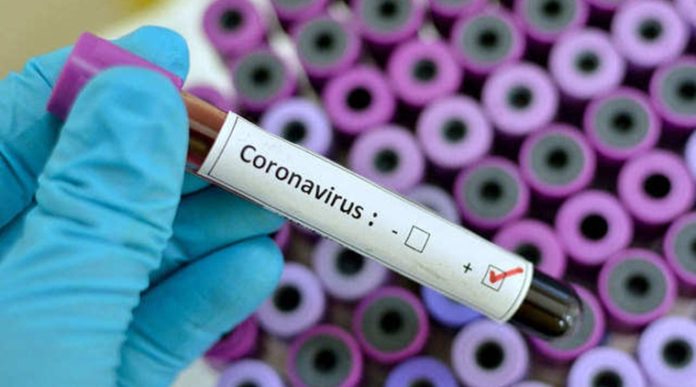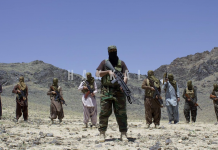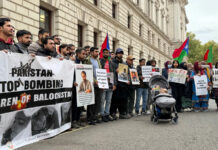New Delhi (NVI) While the reported Covid numbers in India are reducing, concerns are mounting regarding the rural areas where a majority of the country’s population resides with ample ignorance and illiteracy and without any semblance of proper medical care.
The second wave of coronavirus, which started over a month back, exposed the huge fault lines in the healthcare system of the country, shockingly in cities and towns which are supposed to have much better healthcare facilities than the rural areas.
Every day, tens of thousands of people desperately searched for ICU hospital beds with oxygen and ventilators for their near and dear ones afflicted with the deadly virus but many failed in this pursuit and the patients perished. The sufferings were articulated and amplified on social media by those close to the patients, which was of help in some cases and of no help in many cases.
Given this situation in the cities and towns, where people are educated and much aware of healthcare issues, one can only imagine the situation in villages where the residents lack education and awareness about their medical needs.
While cities and towns have big hospitals, including super speciality ones, the villages hardly have a primary healthcare centre (PHC) each, with a non-punctual single doctor and negligible medical equipment even during the normal times. The people won’t even know if they contract Covid and may be treating it as normal flu, since the symptoms are similar.
There are also questions like — Is proper testing facility available in villages? Are villagers aware of the Covid protocols? In case they get infected, are isolation or quarantine places available in the rural areas?
Experts feel that the ground situation in villages must be extremely bad but there are hardly any reports on the condition. Some reports trickling out of some villages suggest that people are dying in unusually large numbers, which could be because of Covid, but those are not accounted for under the pandemic.
For instance, a media report said that in a span of 15 days of this month from May 1, Administration of Noida on the outskirts of Delhi issued 1,460 death certificates, including for villagers of Dadri and Gautam Budh Nagar. It is suspected that the unusually huge number of deaths took place because of Covid but there is no data to confirm it.
“Even as the second wave declines, my patients from rural areas have a different story to tell — one of masses of people with fever, some dying, all without testing. Terribly worried that there is a COVID surge in rural India that is going largely unchecked & undetected,” Dr Arvinder Soin, Group Chairman, Liver Transplantation at the Gurugram-based Medanta Hospital, tweeted today.
The Allahabad High Court, while hearing a case regarding healthcare facilities in Uttar Pradesh recently, observed that the past few months had shown that the medical infrastructure “is very delicate, fragile and debilitated”.
It said the “entire medical system” of the state “pertaining to the smaller cities and villages can only be taken to be like a famous Hindi saying, Ram Bharose (at the mercy of God)”.
“When it (the healthcare system of UP) cannot meet the medical requirements of our people in normal times, then it definitely had to collapse in the face of the present pandemic,” it said.
The court added that it had “no hesitation in observing that health infrastructure is absolutely insufficient in city areas to meet the requirement of city population and in the rural areas the Community Health Centres are virtually lacking in respect of life-saving gadgets”.
Against the backdrop of such a scenario, Prime Minister Narendra Modi told state and district officials at an interaction today that messages should be spread about “keeping villages Corona-free and following COVID-appropriate behaviour, even when cases are declining.”
In India, rural healthcare is a three-tier system comprising Sub-Centres, Primary Health Centres (PHC) and Community Health Centres (CHC).
The health facilities, according to the data available in March 2018, faced a major shortfall — 18% at the Sub-Centre level, 22% at the PHC level and 30% at the CHC level.
Even as some facilities have been raised over the years, the workforce availability is substantially below the levels recommended by the World Health Organization (WHO).
According to estimates, there are merely 3.2 government hospital beds available per 10,000 people in the rural areas on national average. However, in several states, the number is even lower than the national average.
For example, in Bihar, the average number is 0.6 beds for a population of 10,000 in rural areas, in Maharashtra, it is 2 beds, in Jharkhand, it is 2.3 beds, in Rajasthan 2.4 beds and in Uttar Pradesh, it is 2.5 beds per 10,000 people.
There is also shortage of doctors and other healthcare workers. While qualified private medical practitioners are non-existent, government doctors are hesitant and resistant to be postings in villages.
According to Dr Punita Hasija, senior officer bearer of Indian Medical Association (IMA), the government doctors don’t want to be posted in rural areas because of lack of even basic facilities there. The main reasons are lack of proper focus and absence of funds required to improve the facilities.
If the government improves the facilities, including at the medical centres, in rural areas, there will be no reason for doctors to be posted there, she said.








